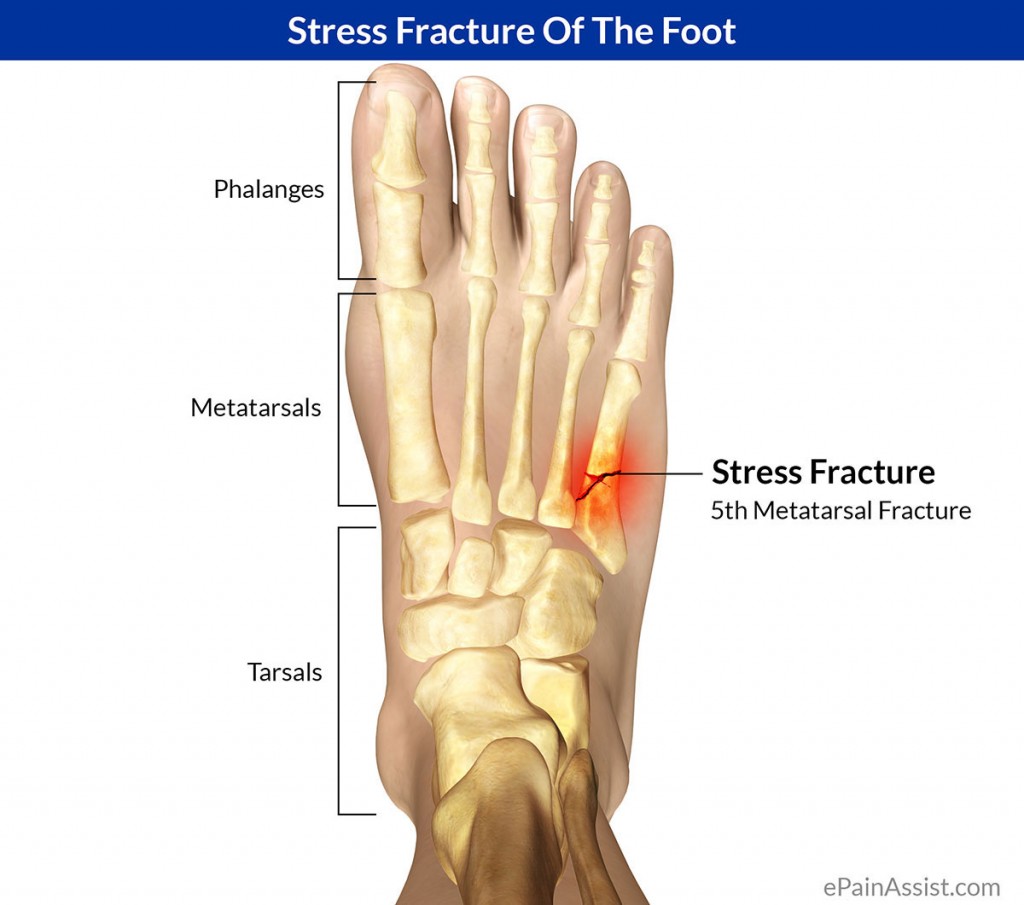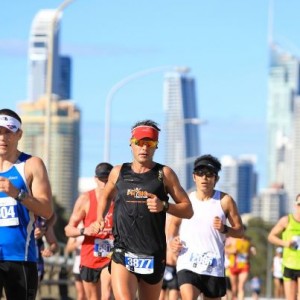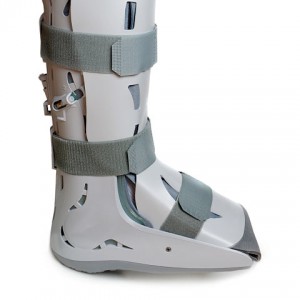Ouch! How do you know if you have a bone stress fracture?

This gymnast broke his leg at Rio & likely had a bone stress fracture in his bone for this to happen
Bone is considered a ‘metabolically active’ tissue. This means that bone cells are continuously forming and breaking down at different rates depending on the forces and stresses placed upon them.
When the bone breakdown forces exceed how fast the bone cells re-form, micro-cracks can develop and the bone will start to undergo stress changes and you can develop what is known as a ‘Stress Reaction’, which is essentially like a bone bruise. The current thought is that if this bone reaction progresses, a true crack, or fracture line through the bone can develop.
Bone stress injury and a frank stress fracture can occur in any bone and can be divided into low risk sites and high risk sites. High Risk sites are area’s in the body where bone is known to heal poorly and therefore may cause on-going symptoms. High risk sites include the sacrum, pelvis and top of your hip bone (femoral head), the calcaneus (heel bone), your 2nd and 5th toes (depending on where in these bones), low back, sesamoid bones under the bottom of your big toe and the front of your tibia (shin bone). Low risk sites will usually heal back to 100% with no real challenges of management and these sites include inside of your tibia (shin), thigh bone, ribs and shaft of your toes. Unusual sites include: back of the ribs, ulna (forearm), fingers, upper arm, sternum and collar bone.
Bone stress injuries in the lower limb occur mostly in weight-bearing sports, commonly running and dancing athletes and can be a significant disruptor to training.
 HOW DO I KNOW IF I HAVE A BONE STRESS INJURY (BSI), ie A STRESS REACTION OR STRESS FRACTURE?
HOW DO I KNOW IF I HAVE A BONE STRESS INJURY (BSI), ie A STRESS REACTION OR STRESS FRACTURE?
Bone pain often starts as a mild ache. Usually there will be a history of a significant change in training load prior to the ache starting– this may be an increase in speed, intensity, distance, change in training surface, change in running or jump technique, change in shoes/footwear or change to more weight-bearing activities. However, this is not always the case as sometimes no change of high weight-bearing loads for long periods can also result in the bone becoming weaker – in this case, like remodeling a house, your body will first breakdown some walls before rebuilding them and because there is no change in load stimulus on the bone, there is no stimulus to rebuild the walls.
An area of bone stress will be tender to press on it. If you continue to load as area of bone stress (ie continuing to run or dance or jump), the pain will progressively get worse and become more intense, or more constant. It may start to hurt walking around or without any weight at all. A night ache usually indicates significant progession.
Muscle can feel tight around the area so early bone stress injuries can be easily missed without a thorough assessment.
WHAT DO I DO IF I HAVE PAIN THAT MAY SEEM BONY?
A good Sports Physio or Sports & Exercise Physician should be able to diagnose a possible BSI in clinic, however, to give you the most accurate diagnosis and prognosis of time-frames, your Sports Doc should order an MRI. Xrays are usually not helpful for early diagnosis and bone scans are also non-specific and also expose you to radiation (a one-off dose is not harmful however cumulative radiation doses over your lifetime should be monitored). In complicated cases or for athletes on important time-frames, it would be ideal to have a Sports Physician review your MRI scans and help guide a management pathway.
WHAT DO I DO NEXT IF I HAVE A STRESS REACTION OR STRESS FRACTURE?
Bone needs a combination of ‘relative’ rest and then re-loading to heal. Nearly all bone injuries will heal with 12weeks rest from loading, however, to take this amount of time off training means a significant amount of deconditioning and weakening of tissues occurs and makes the return to competition process far longer than it may need to be.
You need to be guided by your Sports Physio or Sports Physician on the initial period of rest – this time may range from 2weeks to 10weeks depending on the extent of bony injury – and ‘relative’ rest refers to how much reduced loading the bone needs to heal and could range from crutches, to a walking boot, to simply time off run/jump/land activities.
It is then REALLY important you strictly follow the exercises and reloading program provided by your physio to accelerate your rehab and minimise the risk of re-injury.
Also discuss with your Physio the cross-training and strengthening exercises that you can continue during your rest period to minimise your loss of fitness.
Low dosed pulsed ultrasound (LIPUS) may help stimulate an increase in bone reformation. Gold Coast Physio & Sports Health has a LIPUS unit so ask your physio about the recommended use of this to further accelerate your rehab and return to competition.
CAN I AVOID BONE STRESS INJURY?
Tips to avoid bone injury is:
- Ensure you have good bone health: consume 1200mg of calcium per day & ensure your daily KJ consumption through good foods is high enough (limited KJ intake is associated with reduced bone density)
- Use a good coach/dance teacher: your training needs to be monitored and progressed in an appropriate way. A good coach or teacher should monitor how much weight-bearing load you are doing and periodise your training appropriately
- Maintain bone weight-bearing health: bone adapts over time to the forces applied to it and the best stimuli for bone formation is landing contacts, so try to keep some variable levels of plyometric (jumps, lands, skips) training within your weekly program. This needs to also be directed by a coach or trainer so you are doing appropriate amounts. A good trick is to also perform some of this training in barefeet to strengthen your feet and give bones the best stimuli.
- Strength and conditioning training: ensure your muscles and soft tissues are strong. Strong muscles will absorb forces and help protect your bone.
- If you are a runner, don’t do all your running on concrete or road: Add in some trail running to change & reduce the forces on your tissues
- Continue to work on ensuring your sports technique is as efficient as possible
 All our Physio’s at GCPSH are up-to-date with the latest management of Bone Stress Reactions and Stress Fractures. In addition, Dr Dion Lewis, Sports Physician Registrar, consults from Runaway Bay Clinic twice per week and Exercise Physiologist Harriet Brown can help develop a strength & conditioning/plyometric program.
All our Physio’s at GCPSH are up-to-date with the latest management of Bone Stress Reactions and Stress Fractures. In addition, Dr Dion Lewis, Sports Physician Registrar, consults from Runaway Bay Clinic twice per week and Exercise Physiologist Harriet Brown can help develop a strength & conditioning/plyometric program.
So all your Therapy needs are in one place at GCPSH Phone 07 5500 6470 for an appointment or book online at www.mygcphysio.com.au

